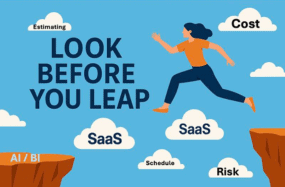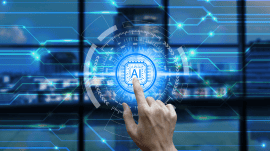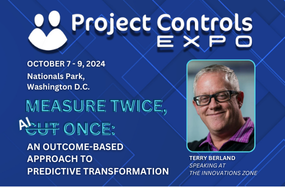
Why Construction AI Is Less About the Tech—and More About the Business Results

I work with project controls experts every day. And one thing I’ve seen time and again is that even the most advanced project intelligence tools can’t deliver results if they don’t solve real business problems. That lesson applies tenfold to project management AI, where success depends less on the algorithm—and more on whether it’s aligned with your people and processes.
That’s especially true when it comes to project management AI, or more specifically, Construction AI.
We hear a lot of hype about artificial intelligence in construction project management revolutionizing the industry. And to be fair, there’s truth to it: AI is already being used to spot risks, flag delays, predict costs, and optimize schedules. But here’s what doesn’t get talked about enough: most of these benefits only show up when AI is embedded into a larger strategy. One that connects the right people, processes, and platforms.
So what does that look like? Let’s unpack it.
The Problem Isn’t a Lack of Tools—It’s a Lack of Insights
McKinsey research shows that large construction projects typically take 20% longer to finish than scheduled and are up to 80% over budget. At the same time, construction remains one of the least digitized industries globally. (Source: McKinsey Global Institute)
Even when companies *have* gone digital, many still rely on siloed software, spreadsheets, and static reports. Project leaders are stuck reacting to issues that already happened, rather than anticipating what’s coming next.
That’s where project AI comes in—or should.
AI in project management isn’t about flashy dashboards or one-off predictions. It’s about real-time visibility. Interrogation ability. Pattern recognition. Predictive analytics. The ability to ask a system, “Where are we likely to slip next?” and get an answer backed by data, not gut feel.
When teams adopt AI tools for project management strategically, they can bridge the gap between raw data and business outcomes.
Real-World Value, Backed by Results
In a Deloitte report on engineering and construction trends, over 70% of surveyed firms said they plan to increase investments in AI, automation, and data analytics. But fewer than 30% said they had fully realized value from those investments. (Source: Deloitte 2023 Engineering & Construction Industry Outlook)
Why the gap? Because implementation matters. Many firms invest in AI but fail to build the data foundation needed to support construction data analytics at scale.
For AI to create business value, it has to do a few things really well:
- Improve forecasting: Spot risks before they escalate
- Enhance agility: Help teams re-sequence work based on real-world changes (like weather, workforce availability, or supply chain disruptions)
- Strengthen reporting: Offer live, cross-platform visibility across the entire project
- Reduce rework: Flag inconsistencies early and minimize waste
We’re seeing these outcomes today in the field—when AI is deployed with intention.
Implementation: The Not-So-Glamorous Side of Innovation
Let’s be real: adopting Construction AI isn’t plug-and-play. There are very real challenges—data quality, integration with legacy tools, organizational change. But those challenges aren’t reasons to wait. They’re reasons to start with a strategy.
Start small. Find a high-value use case (like schedule forecasting). Pilot it. Learn from it. Scale up from there.
And perhaps most importantly, get your people involved. The most effective AI deployments are ones where the humans and the machine are both learning from each other.
What This Means for Leaders
If you’re a CIO, CTO, or head of a PMO, the question isn’t whether to invest in Construction AI. It’s whether your investments are actually moving the needle.
So ask yourself:
- Are our tools helping us make smarter decisions?
- Can we anticipate risks before they derail our plans?
- Are our teams empowered with the right data at the right time?
If the answer is no, it might be time to rethink how you’re approaching AI. Not as a line item, but as a lever for better business outcomes.
Because in capital projects, it’s not the most advanced tech that wins. It’s the most actionable.
Curious how LoadSpring is helping construction leaders turn Construction AI into action? Contact us today, or explore what’s possible with LoadSpring INSIGHTS + Elsie AI™.
By David Taylor
Chief Commercial Officer
LoadSpring Solutions








